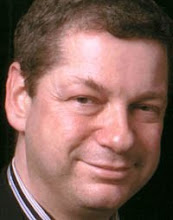Please feel free to discuss this with me. MIAMI BEACH -- Researchers suggested here that many people who are diagnosed with exercise-induced shortness of breath and asthma frequently may be misdiagnosed. In this study, patients exercised and the combination of symptom assessment, physical examination, and pulmonary function testing was used to make a diagnosis. "We found that of the 785 patients who were being treated for shortness of breath in our clinic, 362 of them -- about 46.2% -- were simply overexerting themselves," said Tim Stewart, a physician assistant at the Colorado Allergy and Asthma Centers in Denver. Another 168 people (21.4%) were suffering shortness of breath because they were not fit for the level of exercise they attempted, Stewart reported in a poster presentation at the annual meeting of the American College of Allergy, Asthma & Immunology here. Of the total, 20.9% or 164 of the patients were experiencing exercise-induced bronchospasm -- defined as a 15% drop in forced expiratory volume at one second (FEV1) in relation to exercise or drop of 10 to 15% with pulmonary symptoms. "Many people come to us with shortness of breath during exercise," Stewart said. "We try to replicate as much as possible what happened during exercise that caused their breathing problems, and what we found was that quite often these people were being treated for asthma yet they had some other problem." The researchers found, for example, that in 59 cases, patients had vocal cord dysfunction -- a syndrome that causes asthma-like symptoms as a result of abnormal closure of the vocal cords. "Exercise-induced bronchospasm by self-reported symptoms and/or clinical history without confirmation by an exercise challenge are often incorrect," Stewart said. "This may lead to the inappropriate use of asthma therapy." Stewart and colleagues reviewed findings in 328 males and 457 females, ranging in age from 3 to 68. Often symptoms appeared when patients were engaged in more than one activity, but most occurred during free runs. He said 588 individuals (75%) described symptoms while exercising outdoors; 197 people complained of symptoms that occurred while exercising indoors. In the vast majority of patients, symptoms occurred while they were running, but 22 people said they had symptoms while using a treadmill; 12 experienced shortness of breath on a stationary bicycle; three had symptoms while swimming; and two while using an elliptical device. When they presented to the clinic, Stewart said, 549 (70%) had been diagnosed with dyspnea; 261 (33%) with seasonal or perennial rhinitis; 112 (14%) with asthma, and 104 (13%) with cough. Many of the subjects had multiple diagnoses. Stewart said that among adolescents, many developed shortness of breath when they attempted to move from recreational leagues to varsity athletics, and overexerted themselves while trying to perform at a higher level than they were ready to achieve. "A lot of these individuals came to us because they were not responding to their medication for asthma," said Jerald Koepke, MD, clinical professor of medicine at the University of Colorado Health Science Center in Denver and a founder of the clinic. "Of course, they weren't responding because they didn't have asthma. In 85% of the cases we were able to decrease medication in these patients." Note that this study was published as an abstract and presented at a conference. These data and conclusions should be considered preliminary until published in a peer-reviewed journal. |
Wednesday, November 11, 2009
Shortness of Breath in Exercise Not Always Asthma
Subscribe to:
Post Comments (Atom)

No comments:
Post a Comment